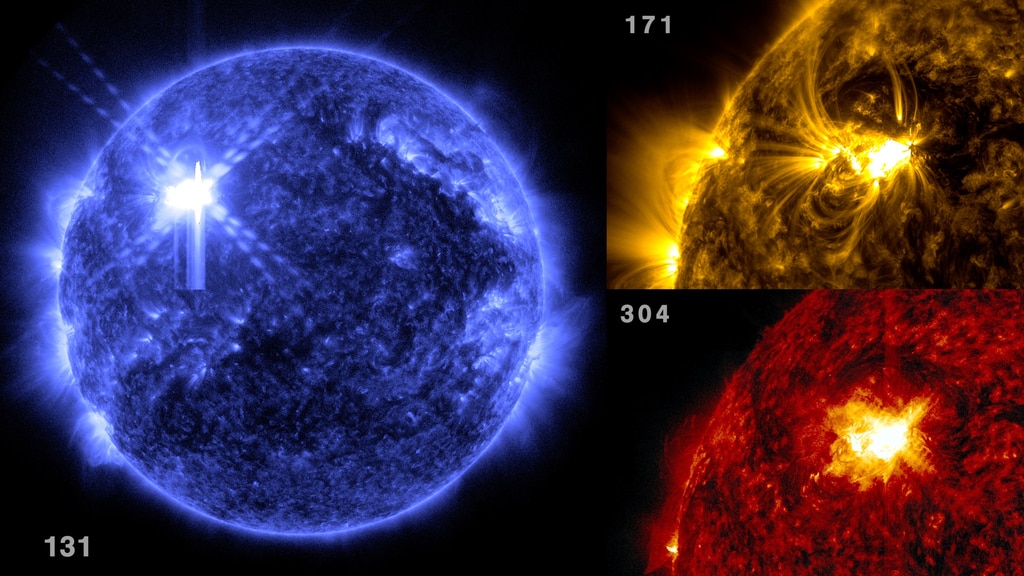Sun Releases Two Strong Flares on February 21 and 22.
NASA’s Solar Dynamics Observatory captured this imagery of two solar flares – as seen in the flashes from the bright region in the upper left of the Sun – on Feb. 21 and 22, 2024. The footage shows a subset of extreme ultraviolet light that highlights the extremely hot material in flares, and which is colorized in teal. Credit: NASA/SDO
The Sun emitted two strong solar flares, the first one peaking at 6:07 p.m. EST on Feb. 21, 2024, and the second peaking at 1:32 a.m. EST on Feb. 22, 2024. NASA’s Solar Dynamics Observatory, which watches the Sun constantly, captured imagery of the events.
Solar flares are powerful bursts of energy. Flares and solar eruptions can impact radio communications, electric power grids, navigation signals, and pose risks to spacecraft and astronauts.
The first flare is classified as an X1.8 flare. The second flare is classified as an X1.7 flare. X-class denotes the most intense flares, while the number provides more information about its strength.

GIF version of the above.
Credit: NASA/SDO

NASA’s Solar Dynamics Observatory captured this image of a solar flare – as seen in the bright flash on theupper left – on Feb. 21, 2024. The image shows a blend of 171 Angstrom and 131 Angstrom light, subsets of extreme ultraviolet light that highlight the plasma loops in the corona and the extremely hot material in flares, respectively. Cropped to highlight the flaring region. Credit: NASA/SDO

NASA’s Solar Dynamics Observatory captured this image of a solar flare – as seen in the bright flash on the upper right – on Feb. 21, 2024. The image shows a blend of 171 Angstrom and 131 Angstrom light, subsets of extreme ultraviolet light that highlight the plasma loops in the corona, tinted yellow, and the extremely hot material in flares, tinted blue, respectively. Credit: NASA/SDO

NASA’s Solar Dynamics Observatory captured this image of a solar flare – as seen in the bright flash on the upper right – on Feb. 21, 2024. The image shows a blend of 171 Angstrom and 131 Angstrom light, subsets of extreme ultraviolet light that highlight the plasma loops in the corona, tinted yellow, and the extremely hot material in flares, tinted blue, respectively. A scale image of Earth is added to show the size of the flaring region. Credit: NASA/SDO

NASA’s Solar Dynamics Observatory captured this image of a solar flare – as seen in the bright flash on the upper left – on Feb. 21, 2024. The image shows a subset of extreme ultraviolet light that highlights the extremely hot material in flares, and which is colorized in teal. Credit: NASA/SDO

NASA’s Solar Dynamics Observatory captured this image of the Sun on Feb. 21, 2024. The image shows a subset of extreme ultraviolet light that highlights the loops of hot plasma in the solar corona, and which is colorized in yellow. Credit: NASA/SDO
For More Information
Credits
Please give credit for this item to:
NASA's Goddard Space Flight Center. However, individual items should be credited as indicated above.
-
Producer
- Scott Wiessinger (KBR Wyle Services, LLC)
Release date
This page was originally published on Thursday, February 22, 2024.
This page was last updated on Wednesday, July 3, 2024 at 5:43 PM EDT.
